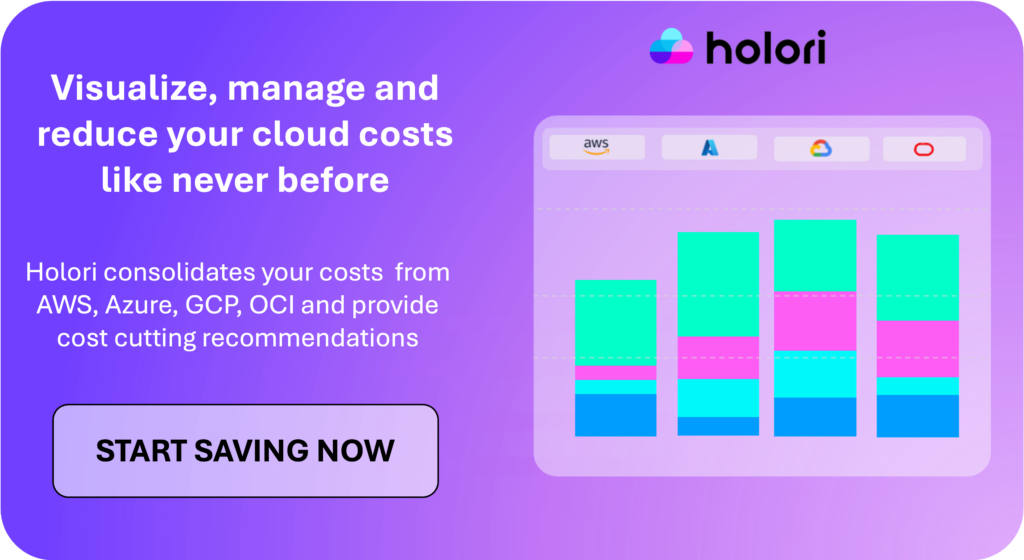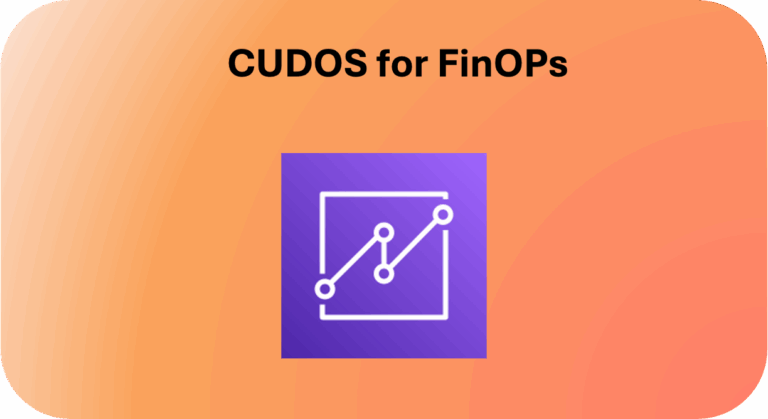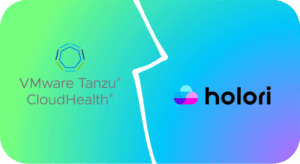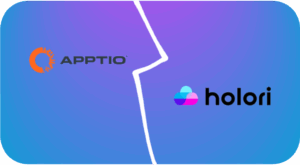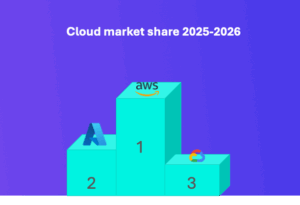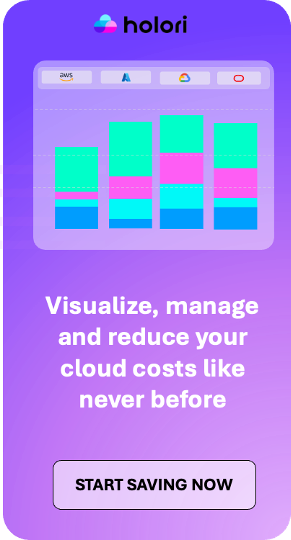When organizations start their FinOps journey on AWS, native tools like AWS cost explorer and then CUDOS (Cloud Intelligence Dashboards) / Amazon QuickSight often appear as the easiest solution for cost visibility. They offer prebuilt dashboards, AWS integration, and a quick path to basic reporting.
However, as FinOps practices mature, teams quickly encounter AWS CUDOS limitations and QuickSight multi-cloud challenges, especially in multi-account or multi-cloud environments. This article explores these limitations and explains why specialized FinOps platforms like Holori are often a better fit.
Why Teams Use CUDOS and QuickSight
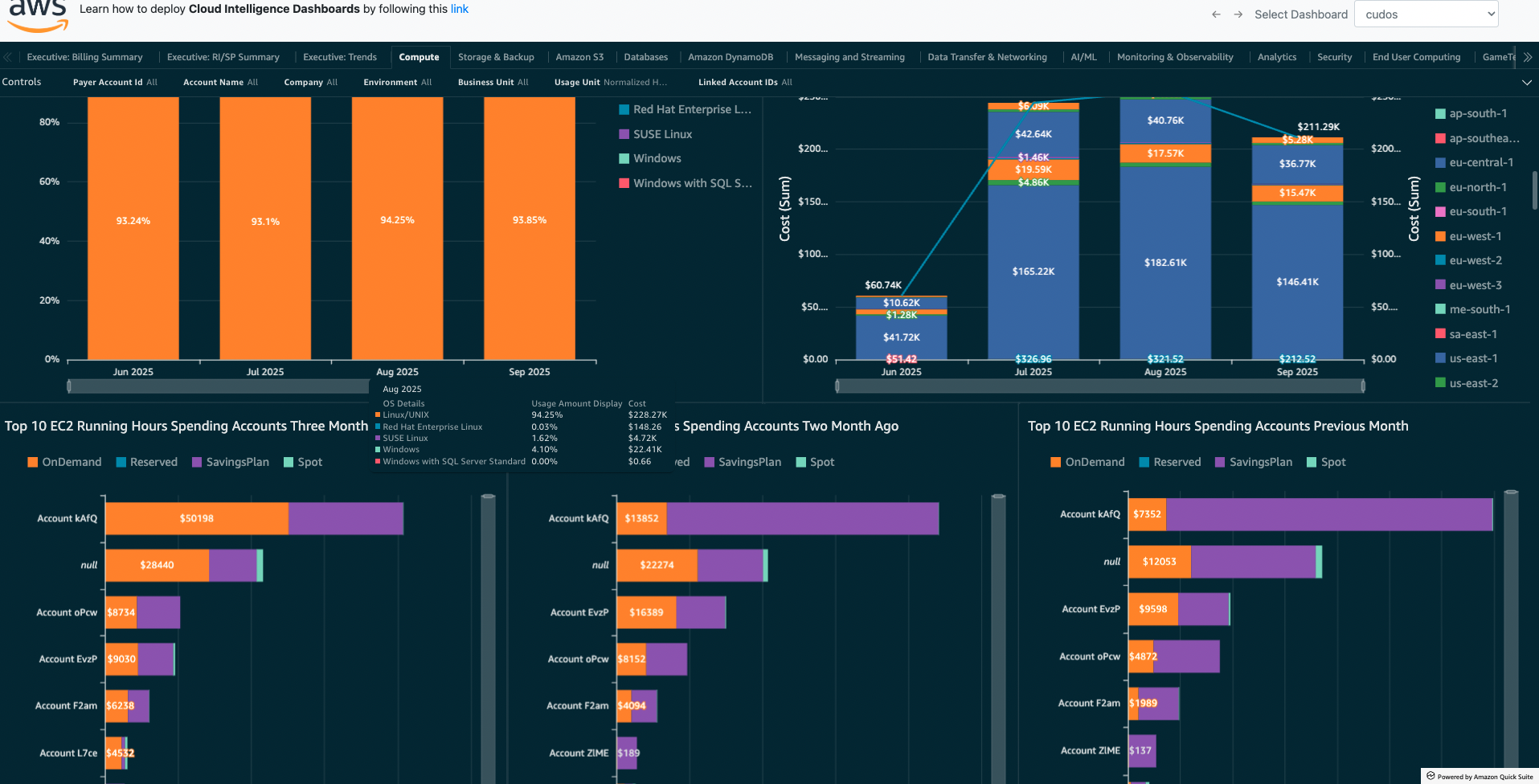
CUDOS dashboards are built on QuickSight and provide:
- Native AWS integration with the Cost and Usage Report (CUR).
- Prebuilt dashboards covering service costs, usage trends, and commitment coverage.
- Quick deployment via CloudFormation templates.
For AWS-first organizations just starting FinOps, these tools offer an accessible way to track cloud costs without additional software.
AWS CUDOS Limitations & QuickSight Challenges
Despite their strengths, these tools face significant limitations as FinOps practices grow.
1. Limited Multi-Cloud Integration
CUDOS is AWS-only. Integrating Azure or GCP billing data into QuickSight is possible but requires complex, manual pipelines, highlighting the limits of QuickSight multi-cloud support.
GCP Integration
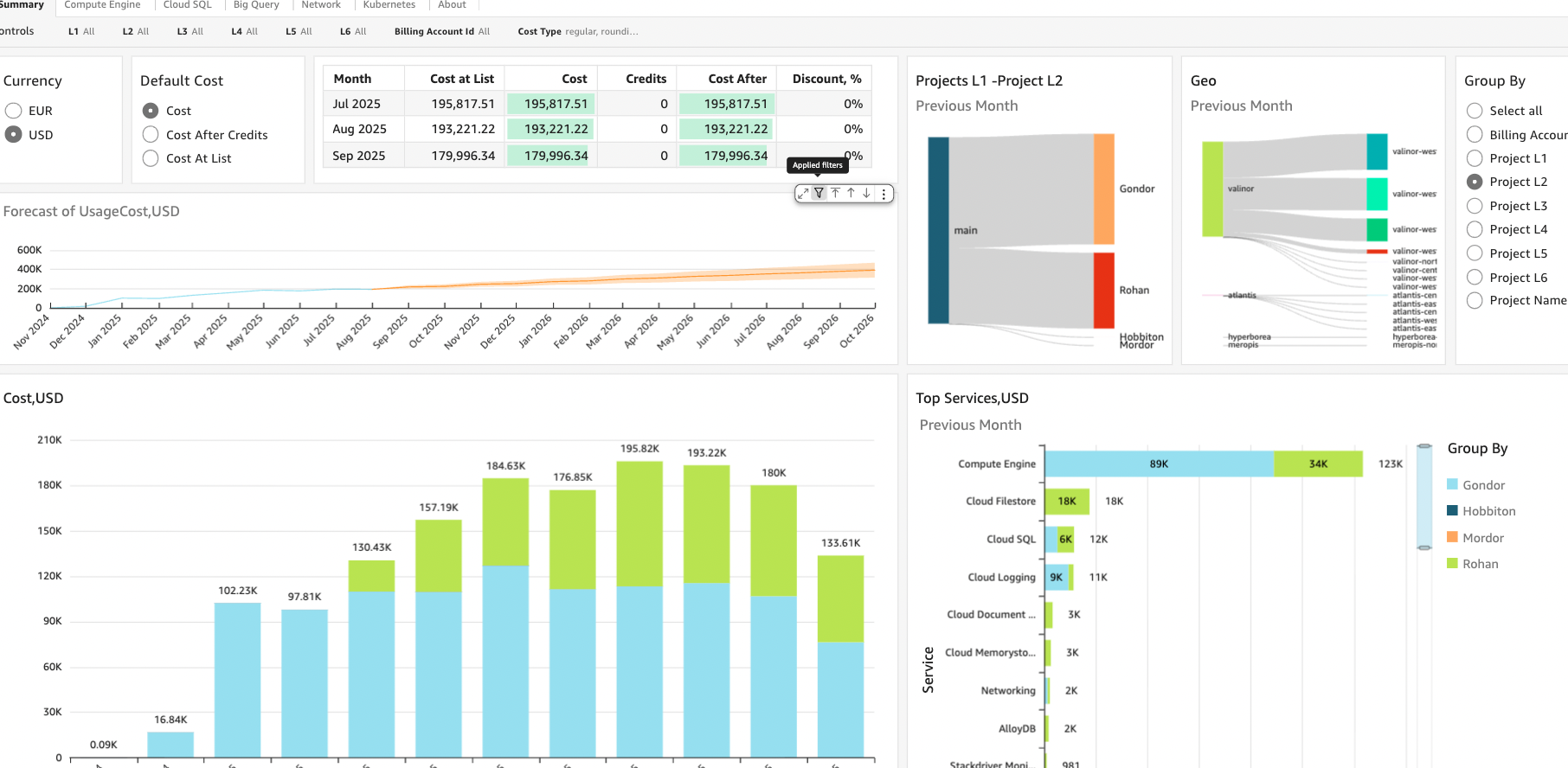
To import GCP billing data:
- Activate Basic Cloud Billing Export, Detailed Cloud Billing Export, and Cloud Pricing Export in BigQuery.
- Enable FOCUS format export.
- Set up an export for each GCP Billing Account ID.
- Create a GCP Service Account with read/write permissions.
- Export BigQuery data to Amazon S3.
- Store Service Account credentials in AWS Secrets Manager.
Even after setup, maintaining this data pipeline requires ongoing engineering effort — it’s far from plug-and-play.
Azure Integration
QuickSight has no native connector for Azure Cost Management:
- Export Azure Cost Management data to Azure Blob Storage.
- Transfer exports to Amazon S3.
- Map schemas manually for Athena queries.
- Maintain pipelines with each schema update.
Both Azure and GCP setups illustrate that QuickSight multi-cloud integration is labor-intensive and prone to errors.
Takeaway: QuickSight is fundamentally AWS-focused. True multi-cloud FinOps requires platforms like Holori, which connect natively to AWS, Azure, and GCP. Also companies often have non hyperscalers costs, observability costs, datalake costs and now AI costs that are outside of the cloud vendors, managing those with CUDOS is not possible.
2. High Setup and Maintenance Overhead
While CUDOS and QuickSight are marketed as low-cost or even “free” FinOps tools, the true cost lies in setup and maintenance.
CUDOS requires a Cost and Usage Report (CUR) exported to S3, Athena queries, Glue tables, and multiple CloudFormation templates. Each of these components must remain in sync as AWS updates its billing schema — which happens frequently.
In practice, keeping CUDOS accurate and operational demands ongoing engineering effort. Teams often need to:
- Maintain Athena and S3 pipelines to ensure billing data is refreshed daily.
- Handle schema or format changes when AWS updates the CUR or introduces new pricing dimensions.
- Troubleshoot broken dashboards when QuickSight visuals lose connection to updated datasets.
- Manage IAM permissions and security policies for QuickSight users and underlying resources.
Over time, these manual processes create significant hidden costs.
For instance, if a company assigns even one cloud engineer and one analyst to maintain and troubleshoot CUDOS and QuickSight dashboards, the total annual cost could easily exceed €120,000–€160,000 in internal resources — not including the opportunity cost of what those experts could be doing instead.
By contrast, a FinOps platform like Holori automates this entire chain.
It connects directly to your AWS billing data, refreshes automatically, and provides cost allocation, tagging, and optimization insights out of the box.
In other words:
CUDOS and QuickSight are not truly free — they simply shift costs from AWS billing to your engineering team.
3. Data Refresh and Performance Limits
QuickSight cannot reliably handle large, evolving billing datasets:
- Slow refresh times.
- Partial or failed refreshes.
- Delays in anomaly detection.
FinOps requires daily reliable updates, which CUDOS cannot guarantee without manual oversight.
4. Lack of Actionability
QuickSight and CUDOS excel at showing data, not acting on it.
They can visualize cost trends but cannot:
- Trigger alerts or incidents when anomalies occur
- Recommend or apply optimizations
- Enforce budget policies
- Automatically allocate shared costs
In FinOps maturity terms, they provide “inform”, but not “optimize” or “operate.”
Holori closes that gap with automation features such as:
- AI-based anomaly detection and alerts
- Cost allocation by team or environment
- Rightsizing and commitment purchase recommendations
- Daily auto-synced infrastructure diagrams linking costs to architecture decisions
QuickSight tells you what happened.
Holori helps you understand why — and what to do next.
5. Dashboard Overload
CUDOS and QuickSight provide dozens of prebuilt dashboards, which can overwhelm finance teams and non-technical stakeholders. Users often struggle to identify which dashboard to trust, creating fragmented visibility instead of clarity.
Holori addresses this by offering a single customizable dashboard, consolidating AWS, Azure, GCP, and AI provider costs.
When QuickSight + CUDOS Make Sense — and When They Don’t
Use CUDOS if:
- You operate mainly on AWS and are beginning your FinOps journey.
- You want cost visibility without paying for a new SaaS platform.
- You have internal BI/SQL expertise to manage data pipelines.
Move Beyond CUDOS if:
- You manage multi-cloud environments (AWS + Azure + GCP).
- You need daily refreshes and reliable anomaly detection.
- You want automated tagging, allocation, and optimization.
- You want tailored recommendations sent to ticketing services
- You aim to correlate architecture and cost visually.
- Finance need to be onboard
For most organizations, CUDOS serves as a stepping-stone, not an endgame.
CUDOS vs Third-Party FinOps Platforms: Quick Comparison
| Feature | CUDOS / QuickSight | Holori FinOps Platform |
|---|---|---|
| Cloud Coverage | AWS and partial GCP and Azure | Multi-cloud (AWS, Azure, GCP, Datadog, Cloudflare, OCI…) |
| Setup Effort | High (CUR, S3, Athena, CloudFormation) | Minimal (connect cloud accounts) |
| Maintenance | Manual upkeep | Automated sync & updates |
| Optimization Recommendations | ❌ Limited | ✅ Rightsizing, idle detection, commitments |
| Actionable Insights | ❌ Limited | ✅ Built-in |
| Architecture Context | ❌ No | ✅ Visual diagrams |
| Pricing | QuickSight user-based | SaaS-based, scalable |
| Accessibility | Overwhelming dashboards | Unified, customizable |
Why Holori Outperforms CUDOS and QuickSight
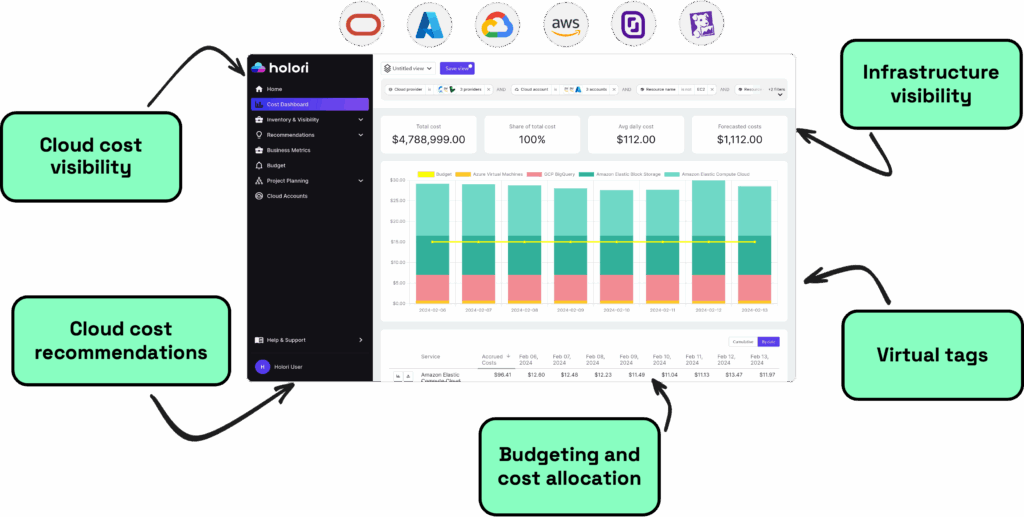
While CUDOS and QuickSight give you visibility into your AWS costs, they stop short of offering real operational control. Holori bridges that gap by combining multi-cloud visibility, cost optimization, and infrastructure intelligence in one unified FinOps platform.
First, Holori eliminates the need for complex manual setups or cross-cloud exports. Instead of configuring billing pipelines or maintaining S3-to-Athena-to-QuickSight chains, Holori connects directly to your AWS, Azure, and GCP billing APIs. This means you can view all your cloud expenses in one place — with consistent granularity and no engineering maintenance.
Cost allocation is also dramatically simplified. Holori’s Virtual Tags feature lets you categorize untagged or inconsistently tagged resources, ensuring that every euro or dollar of cloud spend is correctly attributed to the right project, environment, or business unit. This resolves one of the most persistent challenges in FinOps: incomplete tagging data.
Where CUDOS stops at static dashboards, Holori offers customizable dashboards designed for different teams and use cases. Finance can focus on spend allocation and budgets, engineering can monitor usage trends and anomalies, and management can access a high-level overview of total cloud costs. All dashboards update automatically, with no need for Athena queries or manual data refreshes.
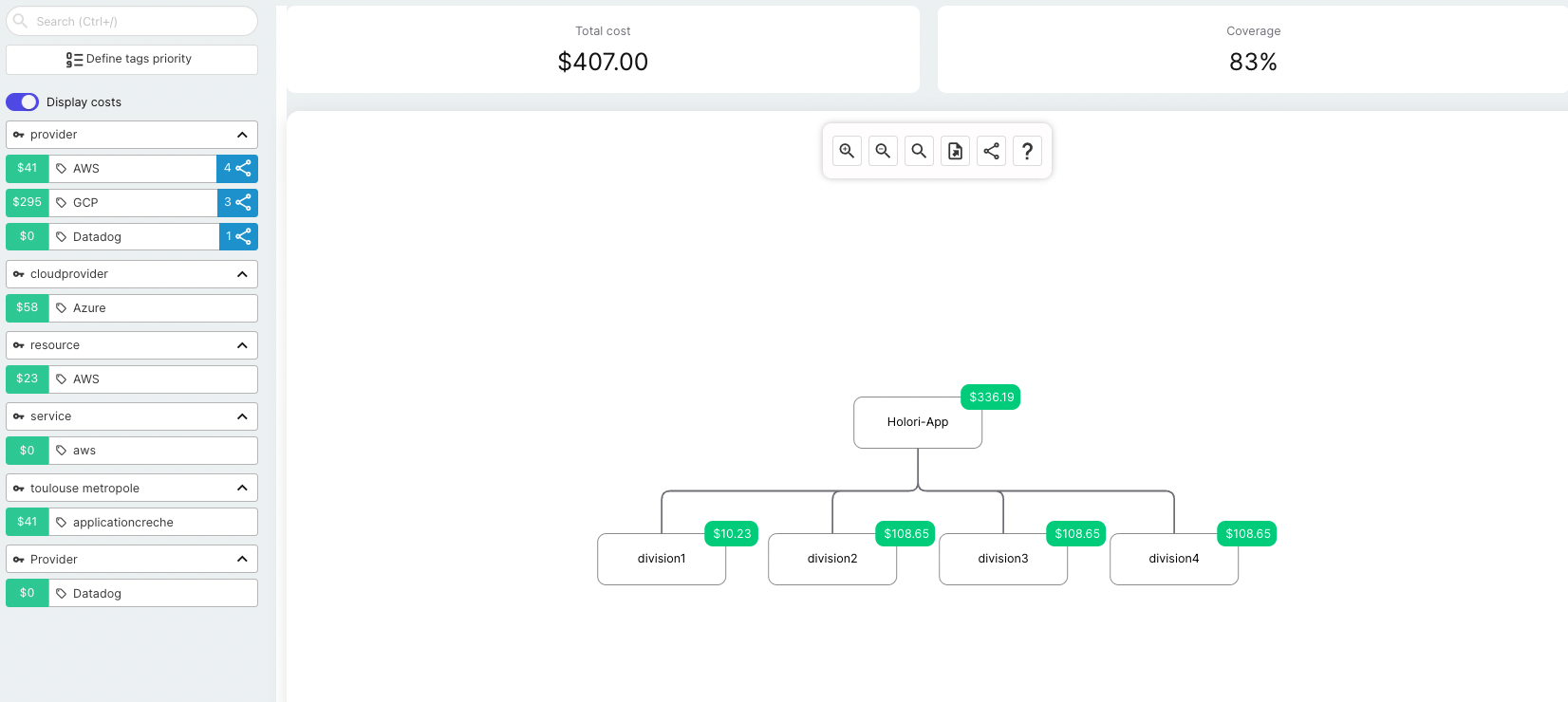
Beyond visibility, Holori provides actionable recommendations. The platform automatically identifies optimization opportunities such as idle resources, overprovisioned instances, and underutilized commitments. It also helps teams plan and simulate Savings Plans or Reserved Instance purchases, turning insight into concrete savings.
Finally, Holori brings a layer that CUDOS and QuickSight completely lack: infrastructure context. With its Auto-Sync feature, Holori generates visual diagrams of your cloud architecture, linking cost data directly to deployed resources. This visual layer helps you understand not just how much you’re spending, but why — and which components of your architecture drive that spend.
In short, Holori turns cloud cost management from a reporting exercise into a continuous optimization process. It scales seamlessly with your infrastructure, automates maintenance, and fosters real collaboration between finance, engineering, and management — something static QuickSight dashboards can’t achieve..
Conclusion
CUDOS and QuickSight are good starting points for AWS-first FinOps teams, providing visibility and prebuilt dashboards.
However, for multi-cloud, multi-account environments requiring actionable insights and optimized workflows, native AWS tools quickly reach their limits.
Platforms like Holori allow teams to go beyond dashboards, unify costs, and control cloud spend proactively.
CUDOS shows your costs. Holori helps you control them.
Frequently Asked Questions (FAQ)
Is AWS CUDOS free?
Yes, dashboards are free. QuickSight, however, costs $24/month per author and $0.30 per session per reader. Athena queries may incur additional charges.
Can CUDOS or QuickSight handle Azure or GCP billing?
Not natively. Multi-cloud integration requires manual exports to S3 and pipeline maintenance.
How often does CUDOS data refresh?
Typically 24–48 hours, depending on CUR and Athena refresh schedules. Near real-time visibility is not supported.
What’s the main limitation of CUDOS?
It provides visibility but no action — you can see costs, but cannot optimize or automate responses.
Is QuickSight sufficient for FinOps?
For AWS-only environments and small teams, yes. For multi-cloud or large-scale FinOps, it becomes limited and maintenance-heavy.
